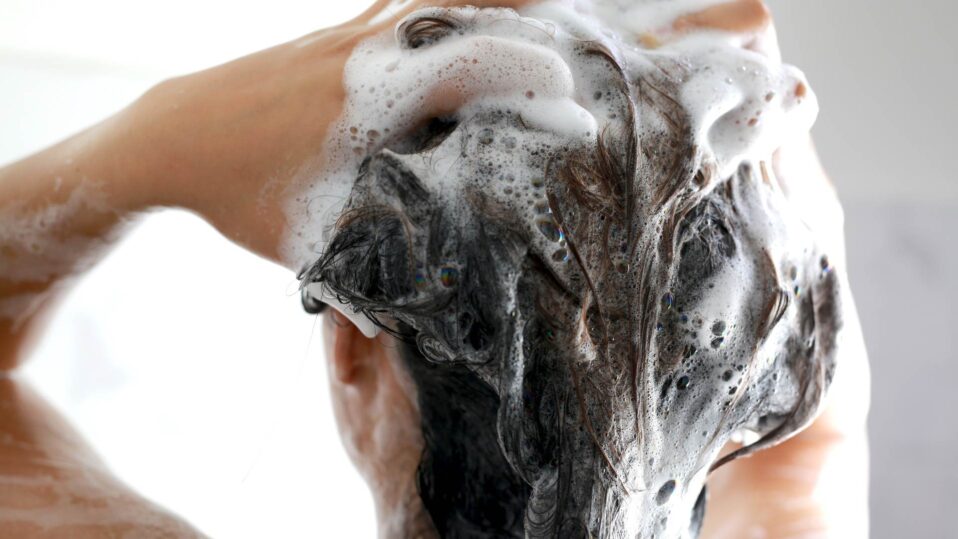How to Achieve Salon-Quality Hair at Home

Achieving salon-quality hair at home is an attainable goal for anyone willing to invest a little time and effort into their hair care routine. With the right products, techniques, and tips, we can all experience that luxurious, soft hair typically reserved for a professional salon visit. In this article, we will delve into essential tips and tricks for attaining the best at-home hair care. From shampooing to heat styling and beyond, let’s uncover how to make every day a great hair day.
- 1 Choosing the Right Shampoo and Conditioner
- 2 Heat Styling: Tools, Techniques, and Protection
- 3 Maintaining Healthy Hair: Treatments and Care
- 4 Expert Tips for DIY Hair Styling
-
5
FAQ
- 5.1 What are the basic steps to achieve salon-quality hair at home?
- 5.2 How often should I trim my hair to maintain its health?
- 5.3 What are some effective treatments for dry and damaged hair?
- 5.4 Can I achieve professional hair color results at home?
- 5.5 What are the best practices for using heat styling tools?
- 5.6 You may also like:
Choosing the Right Shampoo and Conditioner
Shampoo and conditioner are the cornerstone of any great hair care routine. Selecting the right products is crucial because different hair types require different care. For example, dry hair benefits immensely from moisturizing shampoos and conditioners, while fine hair might need volumizing products.
When choosing a shampoo, it’s important to focus on ones that cater specifically to your hair type. If you have curly hair, opt for sulfate-free shampoos that help maintain your hair’s natural oils. For those who have color-treated hair, color-safe shampoos are essential to preserve hair color and prevent fading. Conditioner plays an equally vital role. Using a conditioner that complements your shampoo can help keep your hair soft and manageable.
To enhance the benefits of your shampoo and conditioner, consider incorporating a deep conditioning treatment into your routine once a week. This can revive dry hair and add a boost of moisture, leaving your hair feeling softer and more nourished.
Tips for Shampooing and Conditioning:
- Don’t over-wash your hair. Washing too frequently can strip your hair of its natural oils, leading to dryness and damage.
- Use lukewarm water instead of hot water, which can open the hair cuticle and cause frizz.
- Ensure that you thoroughly rinse out all shampoo and conditioner to avoid product build-up.
- Apply conditioner from the mid-lengths to the ends of your hair, avoiding your scalp to prevent greasiness.
By choosing high-quality, suitable shampoos and conditioners, you lay the foundation for salon-quality hair.
Heat Styling: Tools, Techniques, and Protection
Heat styling is a common practice for achieving sleek, styled hair, but it can also be damaging if not done correctly. Using the right tools and protecting your hair from heat damage are critical steps in maintaining healthy, salon-quality hair at home.
Essential Heat Styling Tools:
- Blow Dryer: A good-quality blow dryer with multiple heat settings can help you achieve a professional blow dry. The key is to use the cool setting for the final few minutes to lock in shine and reduce frizz.
- Flat Iron: For straight, sleek styles, a flat iron with adjustable temperature settings is essential. Choose one with ceramic plates to minimize damage.
- Curling Iron: For soft, bouncy curls, a curling iron with a protective coating can help you achieve beautiful results without excessive heat exposure.
Heat Protectant: A Must-Have
Before using any heat tool, apply a heat protectant spray or serum. This product creates a barrier between your hair and the heat, helping to reduce damage and maintain soft hair. Look for protectants with nourishing ingredients like argan oil or keratin, which can also help smooth and strengthen your hair.
Best Practices for Heat Styling:
- Always start with clean, dry hair to avoid frying any leftover moisture.
- Use the lowest effective heat setting to achieve your desired style, minimizing exposure to high temperatures.
- Avoid holding heat tools on one section of hair for too long to prevent scorching.
By using the right tools and protecting your hair with quality products, you can enjoy the benefits of heat styling while minimizing damage and keeping your hair looking as if it were styled by a professional.
Maintaining Healthy Hair: Treatments and Care
Healthy hair is the foundation of any great hairstyle. Regular treatments and proper care can significantly improve the look and feel of your hair, making it easier to style and maintain.
Deep Conditioning and Hair Masks
Incorporating deep conditioning treatments or hair masks into your routine can provide a much-needed moisture boost, particularly for those with dry hair. These treatments are designed to penetrate the hair shaft and deliver intense hydration and nutrients.
Types of Hair Treatments:
- Hydrating Masks: Ideal for dry or damaged hair, hydrating masks can replenish lost moisture and repair damage.
- Protein Treatments: For weak or brittle hair, protein treatments can strengthen the hair shaft and reduce breakage.
- Oil Treatments: Applying natural oils like argan oil or coconut oil can help seal in moisture and add shine. These are particularly beneficial for curly and frizzy hair types.
Tips for Maintaining Healthy Hair:
- Trim your hair regularly to prevent split ends and keep your hair looking fresh.
- Avoid over-brushing your hair, which can cause breakage and damage.
- Protect your hair from environmental stressors like UV rays and pollution by using products with protective ingredients.
By incorporating regular treatments and practicing good hair care habits, you can maintain healthy, shiny hair that looks and feels incredible every day.
Expert Tips for DIY Hair Styling
Even with the best care and products, knowing how to style your hair at home can make all the difference in achieving salon-quality results. Here are some expert tips to help you master DIY hair styling.
Blow Drying Like a Pro
Start with towel-dried hair and apply a heat protectant. Use a round brush to lift the roots and create volume. Work in small sections, directing the heat down the hair shaft to smooth the cuticle and add shine. Finish with a blast of cool air to set the style.
Curling Tips
For long-lasting curls, start with a good base. Apply a light mousse or styling cream to damp hair and let it air dry or blow dry with a diffuser. Use a curling iron with a ceramic barrel to create soft, bouncy curls. Hold the iron vertically and wrap sections of hair away from your face for a more natural look.
Straightening Tips
To achieve pin-straight hair, start with a smoothing serum or cream. Use a flat iron with ceramic plates and work in small sections. Glide the iron slowly over each section, applying even pressure. Finish with a shine spray to add a polished look.
Tips for Curly Hair
For those of us with curly hair, the right products and techniques are essential. Use a curl-enhancing shampoo and conditioner to define and hydrate curls. Apply a leave-in conditioner or curl cream to damp hair and scrunch with your fingers. Allow your hair to air dry or use a diffuser to enhance your natural curl pattern.
General Styling Tips:
- Don’t overuse styling products; a little goes a long way.
- Comb your hair when it’s wet to avoid breakage and to distribute natural oils evenly.
- Experiment with different hair styles and accessories to find what works best for you.
By following these expert tips, you can master the art of DIY hair styling and achieve beautiful, salon-quality results at home.
Attaining salon-quality hair at home is entirely within reach with the right approach. By carefully selecting the best shampoo and conditioner for your hair type, protecting your hair during heat styling, and incorporating regular treatments and expert styling tips into your routine, you can achieve and maintain stunning hair that looks professionally styled.
Each step in your hair care and styling routine plays a crucial role in the overall health and appearance of your hair. From choosing high-quality hair products to mastering the art of blow drying and beyond, attention to detail and dedication are key.
As we’ve explored, achieving soft, shiny, and healthy hair doesn’t have to be confined to a visit to the salon. With the right knowledge and tools, you can enjoy beautiful hair every day, right at home. So, embrace your hair care journey, experiment with different products and techniques, and enjoy the confidence that comes with salon-quality hair in the comfort of your own home.
FAQ
What are the basic steps to achieve salon-quality hair at home?
To achieve salon-quality hair at home, start by washing your hair with a high-quality shampoo and conditioner suited to your hair type. Follow up with a deep conditioning treatment or hair mask once a week. Always use a heat protectant before styling with heat tools, and opt for professional-grade tools like flat irons or blow dryers. Finish with a styling product like a serum or hairspray to keep your hair in place and looking polished.
How often should I trim my hair to maintain its health?
It’s generally recommended to get a trim every 6-8 weeks to maintain healthy hair and prevent split ends from traveling up the hair shaft. Regular trims can help keep your hair looking fresh and vibrant, much like a salon finish.
What are some effective treatments for dry and damaged hair?
For dry and damaged hair, look for treatments that offer intense hydration and repair. Deep conditioning masks, leave-in conditioners, and oils like argan or coconut oil can be very effective. Use these treatments regularly, and avoid over-washing your hair to prevent further damage. Additionally, consider reducing the use of heat styling tools or opting for lower heat settings.
Can I achieve professional hair color results at home?
Yes, you can achieve professional hair color results at home by using high-quality hair dye products and following the instructions carefully. It helps to do a strand test first to ensure the color turns out as expected. If you’re attempting a significant color change or complex technique like balayage, it might be worth consulting a professional to avoid potential mishaps.
What are the best practices for using heat styling tools?
When using heat styling tools, always start with a heat protectant to shield your hair from damage. Set your tools to the appropriate temperature for your hair type—lower settings for fine hair and higher for thick or coarse hair. Avoid holding the tool on any section of hair for too long, and give your hair a break from heat styling by incorporating no-heat styles into your routine periodically.

